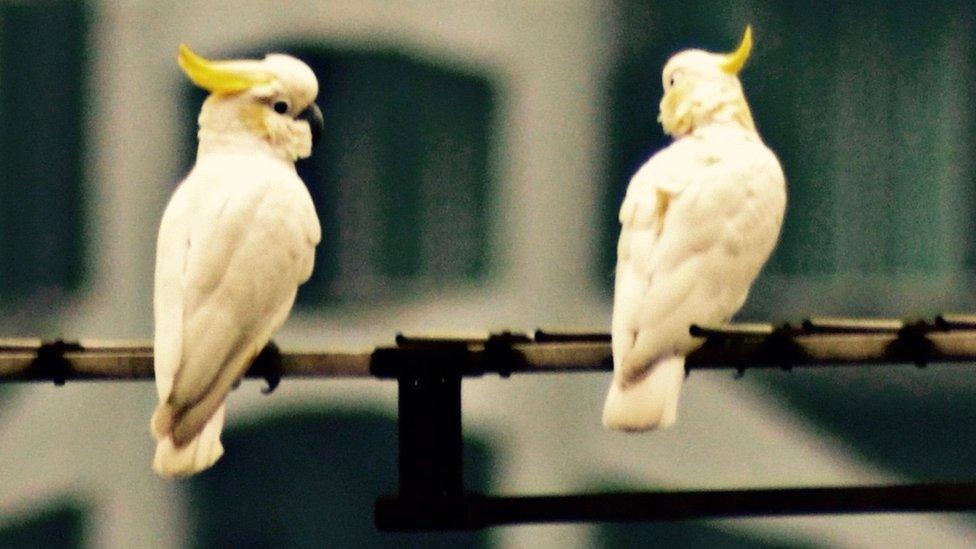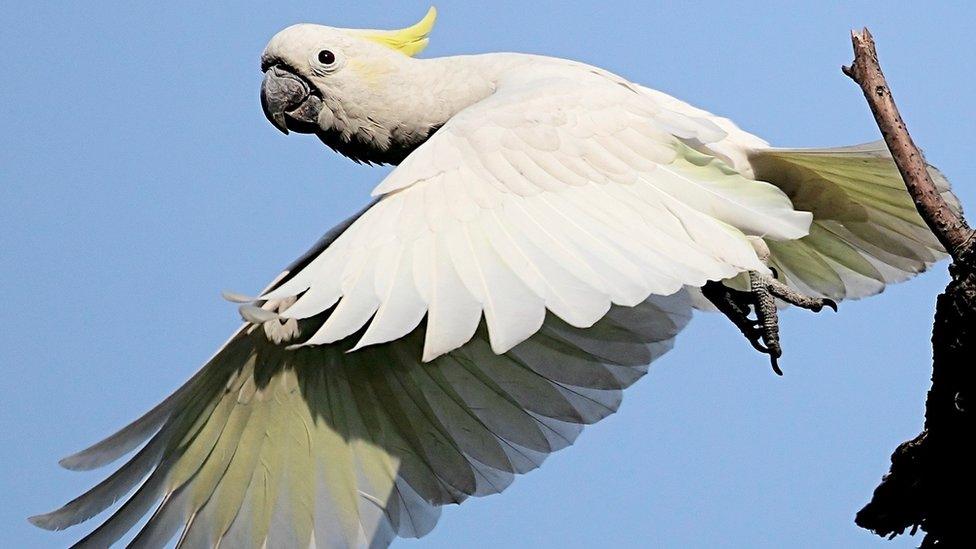New beginning for illegally traded endangered species
- Published

The yellow crested cockatoo is one of the endangered species to become established outside its native range
Illegally traded endangered species that escape, forming secondary populations, offer hope for their long-term survival, a study suggests.
These secondary populations could also be utilised in a way to reduce or halt the pressure on species' native populations, say researchers.
Adopting a more creative approach to conservation could help slow global biodiversity loss, they added.
The findings appear in the Frontiers in Ecology and the Environment journal, external.
"This first came to my attention when I read a news story about the seizure of an illegal shipment of 23 yellow crested cockatoos," said co-author Luke Gibson from the University of Hong Kong.
"Each individual had been stuffed inside a plastic water bottle."

Secondary populations flourish in the absence of poachers
He learned that the species was critically endangered, which surprised him. "I had been seeing the same species flying around directly outside my office at the university," he added.
This prompted Dr Gibson and his colleague Ding Li Yong to investigate how a critically endangered species had become established as a self-sustaining outside of its natural range.
They discovered 49 cases of a globally threatened species becoming established as a separate population, including the the yellow crested cockatoo on Hong Kong island.
"This is a species which is primarily threatened by wildlife trade," he told BBC News.
"Poachers go out into the forest in its native range in eastern Indonesia and capture the bird and then ship them off, usually up to Hong Kong or China where there is a strong demand for pet birds.
"This is what has fuelled the decline of this species [in its native range]. But it's really interesting because that same cause also had another effect: some of the people who were keeping this species in Hong Kong accidentally or intentionally released them."
New beginning
As a result of enough of the birds being released, it allowed a new self-sustaining population to be be established on the island.
The government in Hong Kong has made it illegal to capture the species, even though it is a non-native species.
Because the city-state is affluent and relatively well educated, the cases of people breaking the law are extremely rare, explained Dr Gibson. Unlike in its native range in Indonesia where capturing birds forms a major source of income.
However, there can be downsides to the newly established population of endangered species, such as a limited genetic pool, contracting novel diseases, or hybridisation with closely related species, Dr Gibson added.
However, it did also present a possible "very interesting" opportunity for conservationists, he suggested.
This would involve "harvesting" some of the newly established secondary population. This would allow demands in the wildlife trade to be met but also relieve the pressures on the native populations.
Follow Mark on Twitter, external